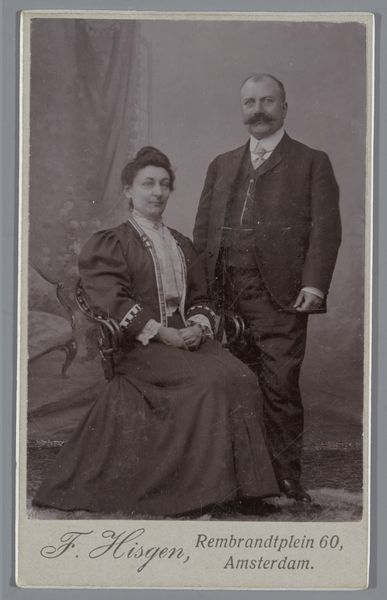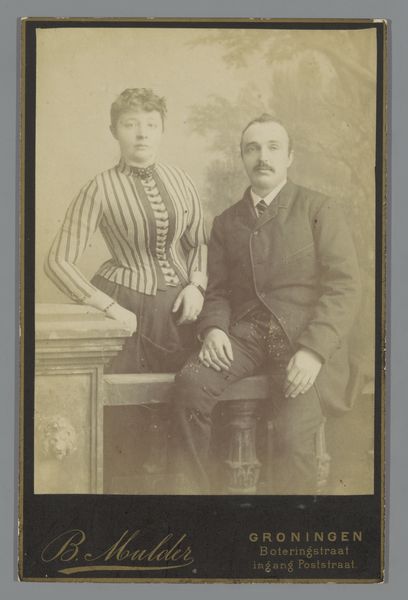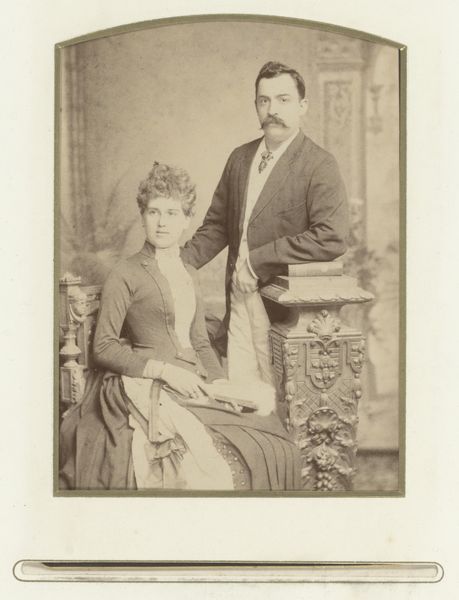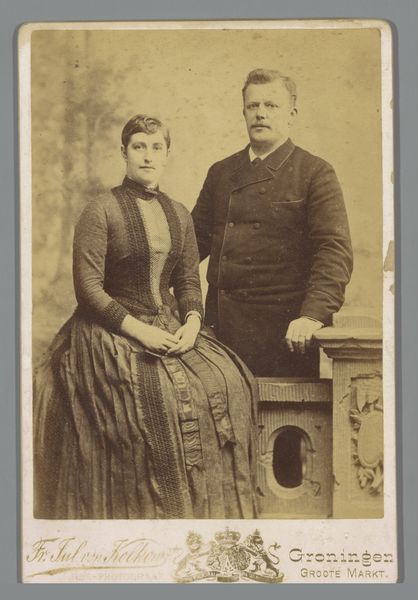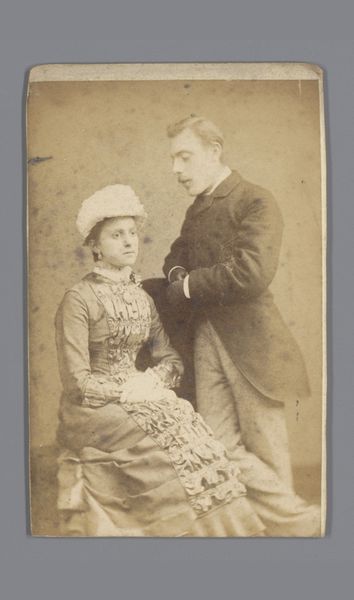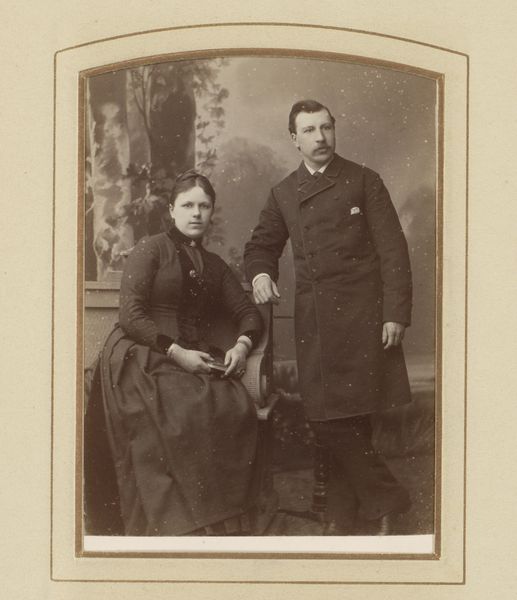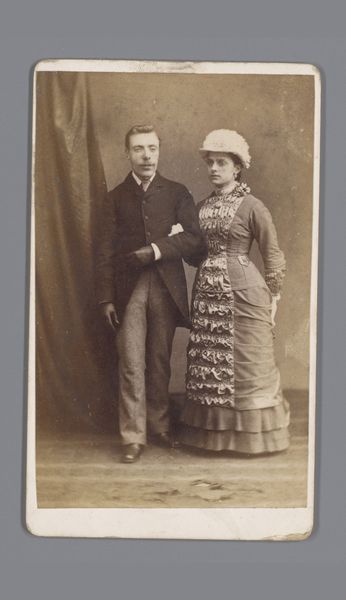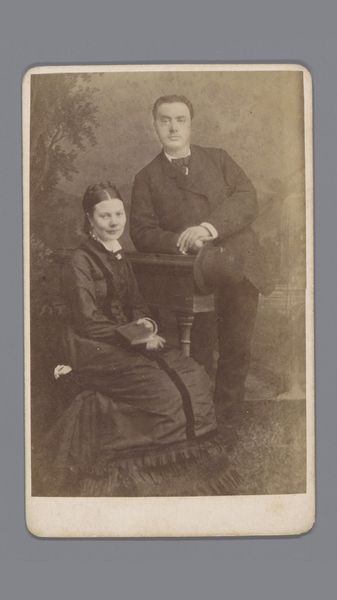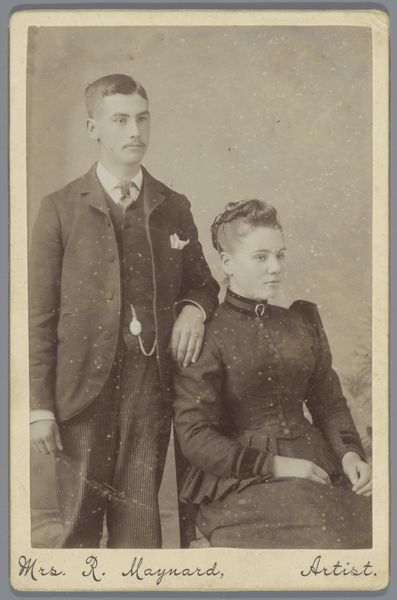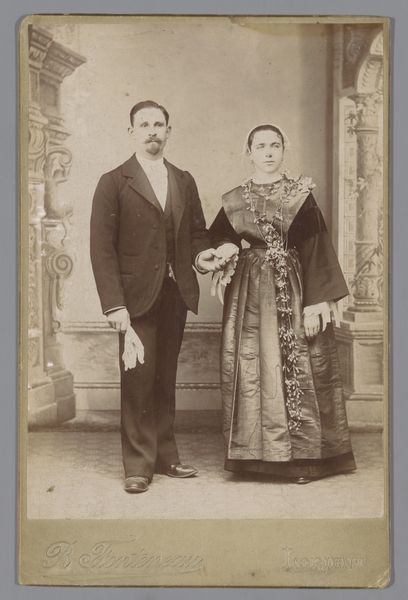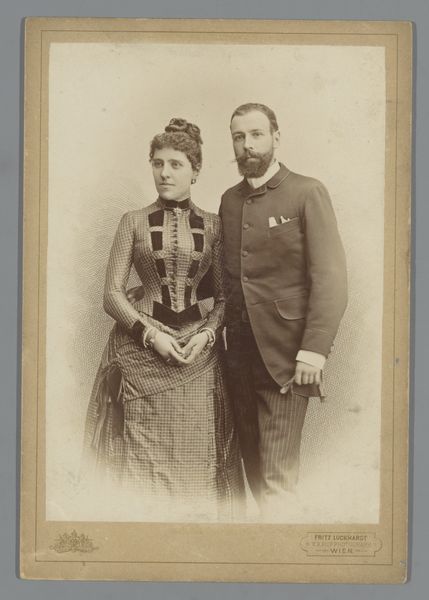
Dimensions: height 105 mm, width 65 mm
Copyright: Rijks Museum: Open Domain
Editor: Here we have a striking albumen print by Jean Baptiste Feilner, entitled 'Portret van een onbekende man en vrouw,' placing it somewhere between 1885 and 1900. What immediately gets me is the somewhat rigid formality of the pair – there’s a story in that pose, wouldn't you say? What do you see happening here, within its historical context? Curator: Absolutely, and it's essential to consider this image within the socio-political frame of late 19th century portraiture. Studio portraiture was becoming more accessible to the burgeoning middle class, and this photograph speaks volumes about the performative aspect of identity. The staging, the clothes, even their controlled expressions -- they all served to project a specific image of themselves, didn’t they? Editor: Projecting, yes, definitely! They’re so proper and buttoned-up. Is that then a commentary on societal expectations or rather an aspiration? Curator: It’s both. Photography, unlike painting, was rapidly becoming a democratized art form. Displaying such portraits in homes served to signal belonging and social status, a visual language of the era. The way the woman is slightly elevated, literally positioned above the man, subtly challenges the patriarchal structure but only in the confines of a studio portrait. It’s fascinating, isn't it, how these subtle details can unpack complex social narratives? Editor: So it’s about understanding what was consciously portrayed versus the implicit socio-cultural tensions of that time? This print really makes you consider the public function of art. Curator: Precisely. Think of photography's role in shaping public perception and how artists responded to its rapid evolution. It goes far beyond simply capturing a likeness. Editor: This makes the photograph so much more than just an image of two unknown people; it's a visual document of its time. I will never look at a portrait the same way again. Curator: That's the power of contextual understanding. Each artwork then becomes a portal into a broader world of history and society.
Comments
No comments
Be the first to comment and join the conversation on the ultimate creative platform.
